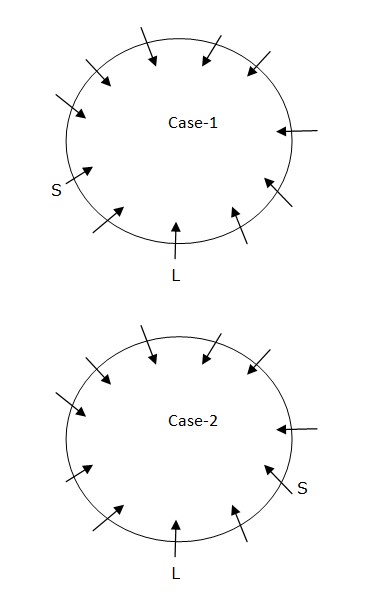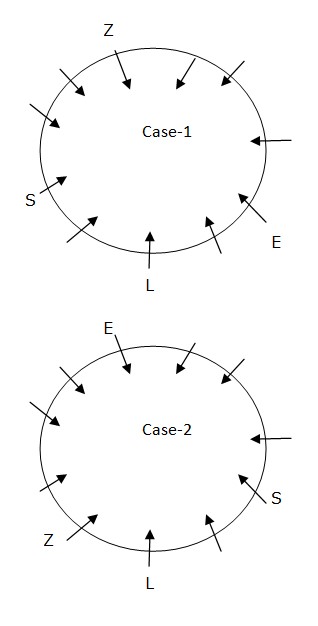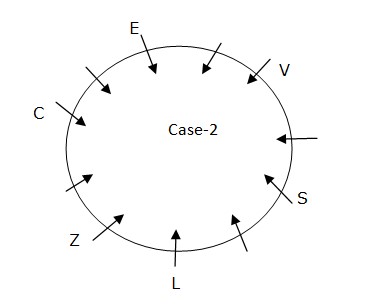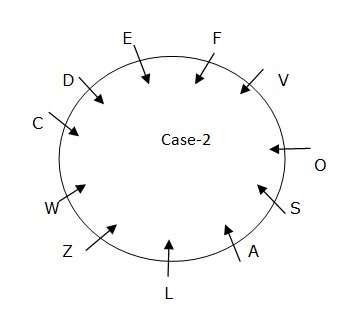Question
Four of the five among the following are similar in
such a way to form a group, which one of the following doesn’t belong to group? Study the following information carefully and answer the questions given below. Eleven persons are sitting in a circular table facing center and F is one of the people among the group. S sits two places away from L. E sits fourth to the right of S. Three persons are sitting between E and Z. C sits fourth to the right of V. Neither C nor V is an immediate neighbor of S or Z. A sits third to the right of W. D sits fourth to the right of O.Solution
S sits two places away from L.  E sits fourth to the right of S. Three persons are sitting between E and Z.
E sits fourth to the right of S. Three persons are sitting between E and Z.  C sits fourth to the right of V. Neither C nor V is an immediate neighbor of S or Z. We cannot fix the position of C and V in Case 1. So this case is eliminated.
C sits fourth to the right of V. Neither C nor V is an immediate neighbor of S or Z. We cannot fix the position of C and V in Case 1. So this case is eliminated.  A sits third to the right of W. D sits fourth to the right of O. F is one of the people among the group Final arrangement-
A sits third to the right of W. D sits fourth to the right of O. F is one of the people among the group Final arrangement- 
What is the working life of a tractor drawn cultivator?
Given below are two statements:
Statement I: Potassium plays an important role in the opening of stomata, maintaining adequate turgor, transporta...
When there is a large potential market for a product, the firm will adopt.
A fluorescent light test is particularly useful in detecting which type of seed impurity?
…………….. refers to removal of field heat (quick cooling) after harvest; if not, its deterioration is faster at higher temperature of 1 hour at ...
Which one is not the component communication?
Water harvesting is defined as
In electron transport system, ____ is the terminal electron acceptor.
Which of the following is the vector of Banana Bunchy Top disease?
Isabgol belongs to the family__________ .
Relevant for Exams:



